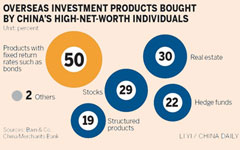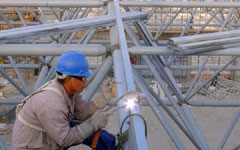Companies going overseas turning to widening world of opportunities
By Yu Ran and Shi Jing (China Daily) Updated: 2014-03-07 08:17As the economy continues to slow and excess capacity builds up, many private firms find no choice but to look abroad, report Yu Ran and Shi Jing in Shanghai
Chinese manufacturers that have been grappling with decelerating economic growth and tougher operating conditions are increasingly concluding that going abroad is an effective way out.
But there's more than one way to go abroad, and not every company has exactly the same set of reasons.
|
 |
|
 |
Among companies seeking to relocate production, fewer than 5 percent plan to move their facilities to low-cost countries within the Asia-Pacific region. The same proportion plans to move them back to the US.
Thirteen percent, however, plan to relocate within China.
While labor costs are rising in the nation, Mark Hutchi-son, president and chief executive officer of GE Greater China, said labor represents a rather small percentage of their costs.
"We don't make decisions on labor costs alone. I'm not worried about the labor cost, as long as we continue to grow the way we have grown here.
"China is a huge market. You always have to employ people here just for the Chinese market. But it has to continue to move up the value chain so that it is competitive globally," he said.
Not every executive is so sanguine. Chesapeake Bay Candle shifted its production home in 2011. Its new facility in Maryland is actually its first in the US.
David Wang, co-founder and co-owner, said there were many reasons for the move, including speed to market, branding value, quality control and inventory management.
He added that many factors have weakened the competitiveness of Chinese manufacturing: currency appreciation, a surge in labor costs (including the cost of labor laws that are more strictly enforced), a shortage of workers and higher costs for land, energy, transportation and financing.
|
 |
 |
- NHTSA says finds no 'defect trend' in Tesla Model S sedans
- WTO rare earth ruling is unfair
- Amway says 2014 China sales may grow 8%
- President Xi in Europe: Forging deals, boosting business
- CNOOC releases 2013 sustainability report
- Local production by Chery Jaguar Land Rover this year
- Car lovers test their need for speed in BMW Mission 3
- China stocks close mixed Monday

















